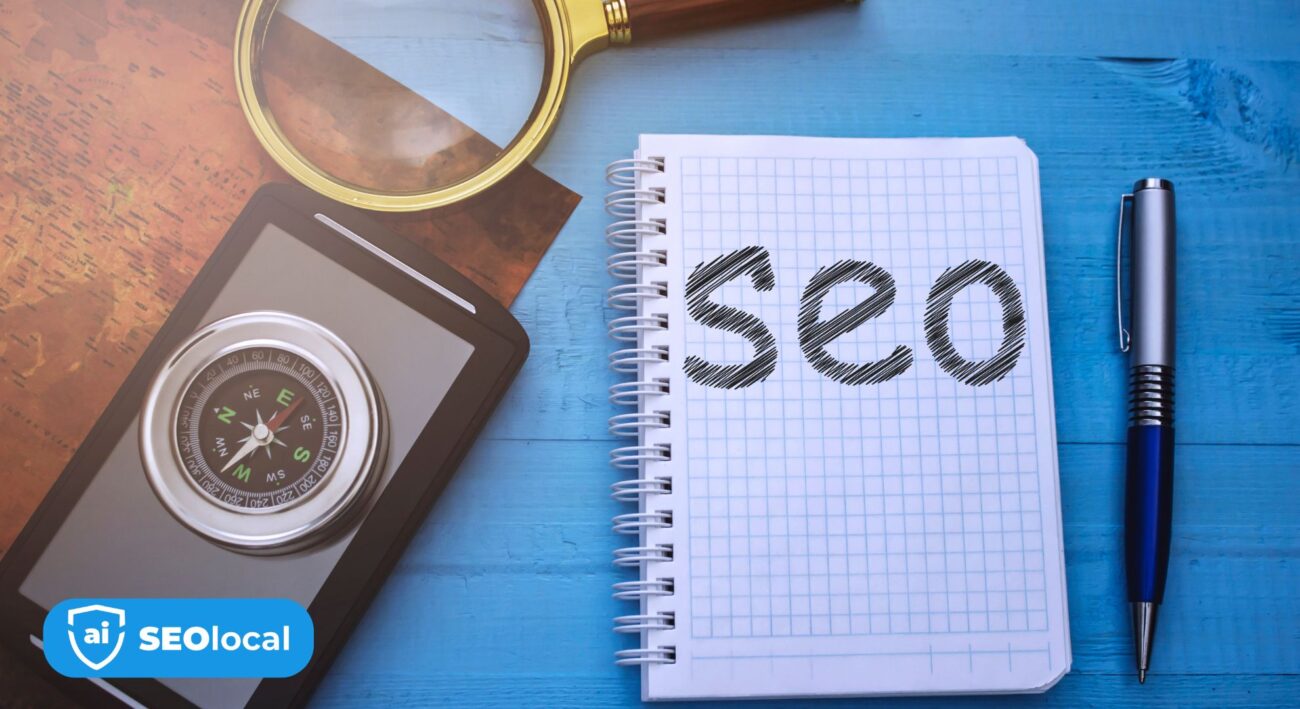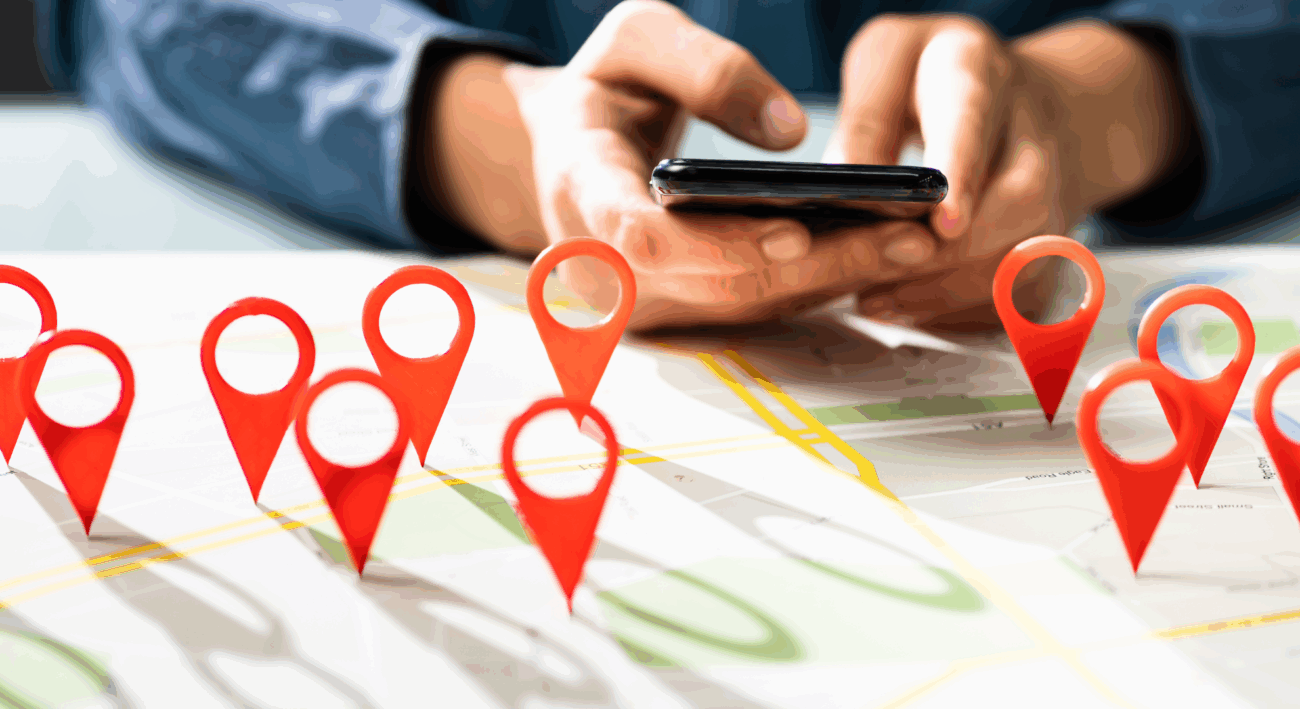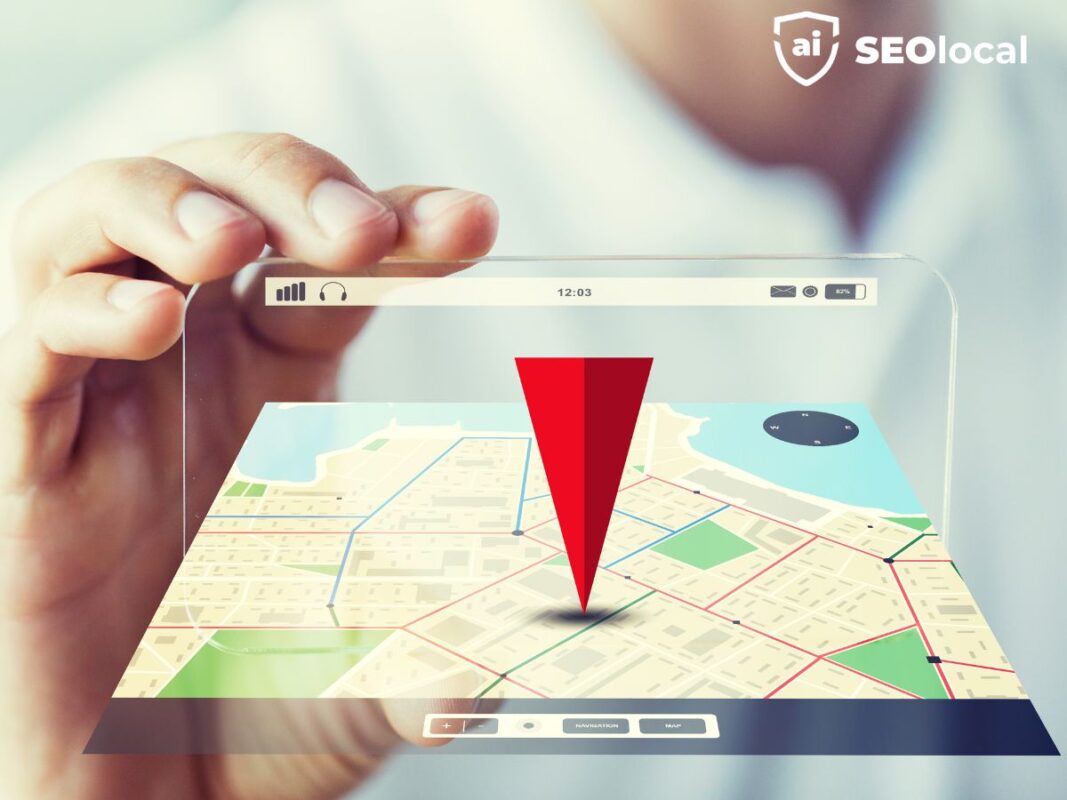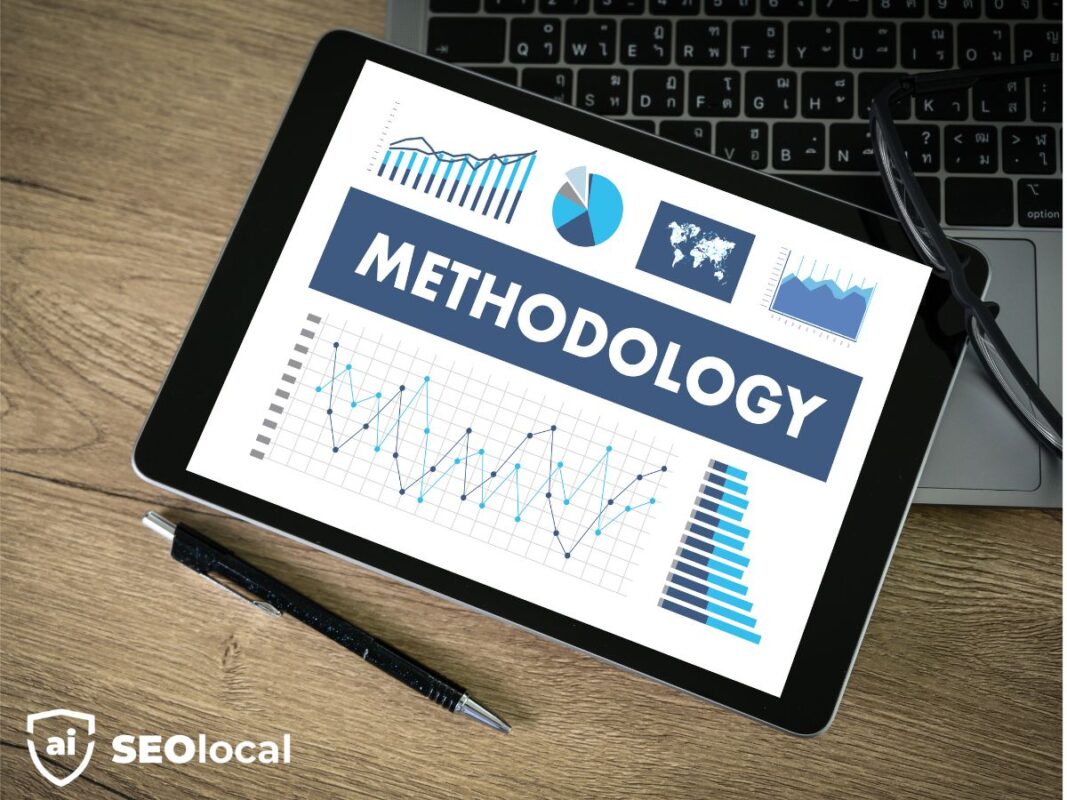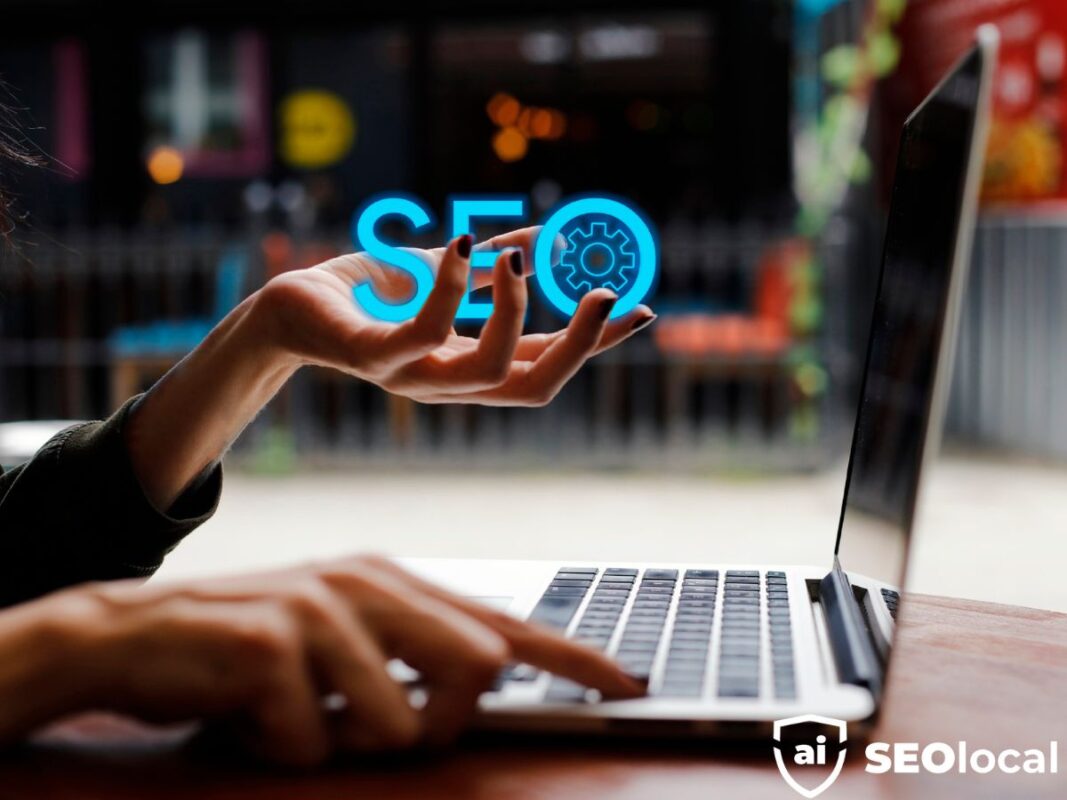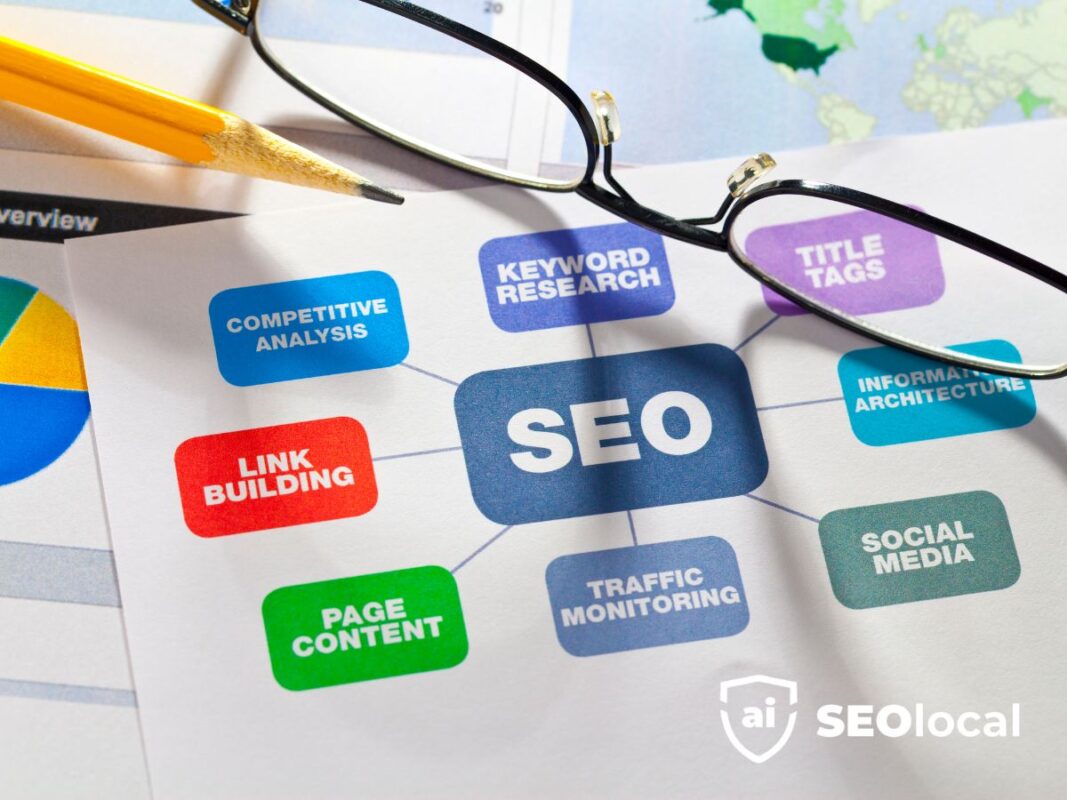- Advanced Local SEO Strategies
- Fundamentals of Local SEO
- Google Business Profile (GBP) Optimization
- Local Keywords and Content Strategy
- Local Link Building
- Local Paid Advertising
- Local Search Ranking Factors
- Local SEO Best Practices
- Local SEO Tools and Analytics
- Local Social Media Marketing
- Online Reviews and Reputation Management
- Technical SEO for Local Businesses
How do I set up local SEO? A Step-by-Step Guide

Nearly half of all Google searches have local intent—46%, to be exact. That means almost every other search is someone looking for nearby businesses, services, or products. If your business isn’t optimized for local searches, you’re missing out on a massive opportunity.
Mobile searches drive even more urgency. Over 61% of searches happen on smartphones, and 78% of local mobile searches lead to same-day visits. Customers are ready to act—they just need to find you first.
This guide breaks down an 8-step framework to boost visibility in local search results. You’ll learn how to optimize your Google Business Profile, maintain NAP consistency, and leverage reviews for better rankings. Plus, discover how to capture “near me” searches with geo-targeted content.
Key Takeaways
- 46% of Google searches have local intent.
- 61% of searches occur on mobile devices.
- 78% of local mobile searches lead to same-day visits.
- Google Business Profile and reviews impact rankings.
- Geo-targeted content helps attract nearby customers.
Why Local SEO Matters for Your Business
Local searches drive immediate action—78% lead to in-store visits within a day. If your business isn’t visible in these search results, you’re losing potential customers to competitors.
Mobile users dominate local searches. 30% look for nearby services, and complete Google Business Profiles boost visit likelihood by 70%. Ranking in map packs and organic results doubles your visibility.
Traditional SEO focuses on broad terms, but local seo targets proximity. A pizzeria climbed to #1 by optimizing for neighborhood keywords and earning reviews. Their sales grew by 110% in three months.
“Near me” searches convert fast. 28% result in purchases, proving intent. Without a seo strategy for local queries, local businesses miss revenue from ready-to-buy audiences.
Local SEO hinges on three factors: proximity (distance from searcher), relevance (service matching needs), and prominence (reputation). Master these, and your business dominates local searches.
Step 1: Claim and Optimize Your Google Business Profile
Your Google Business Profile (GBP) is the digital storefront for local customers searching online. It appears in Google Maps, local pack results, and even voice searches. Verified listings are 50% more likely to attract potential customers, making this a critical first step.
What Is Google Business Profile?
GBP is a free listing that showcases your business name, address, hours, and reviews. It’s the primary way Google displays local businesses to nearby searchers. Without a complete profile, you’re invisible to 64% of consumers who rely on these listings.
Best Practices for Optimization
Start by claiming your profile through Google’s verification process. You’ll receive a postcard with a code to confirm your location. Once verified, prioritize these actions:
- Update business hours to avoid customer frustration.
- Add geo-tagged photos of your storefront, team, and products.
- Use Google Posts to share promotions or events—this boosts engagement by 35%.
Respond to reviews with location-specific phrases like “Thanks for visiting our [City] location!” This reinforces local relevance. A bakery in Austin increased foot traffic by 20% after optimizing their GBP with these best practices.
Step 2: Ensure NAP Consistency Across the Web
Consistency in your business details builds trust with search engines and customers alike. Discrepancies in your business name, address, or phone number (NAP) confuse algorithms and deter potential clients.
What Is NAP in Local SEO?
NAP stands for Name, Address, and Phone number. These details must match exactly across all platforms. Search engines cross-reference citations (online mentions) to verify legitimacy. Even minor differences, like “St.” vs. “Street,” can lower rankings.
Where to List Your NAP
Prioritize authoritative directories and industry-specific platforms. Below are the top sites for local search visibility:
| Directory | Importance | Links |
|---|---|---|
| Google Business Profile | Critical for map rankings | Free |
| Apple Maps | Essential for iOS users | Free |
| Yelp | High traffic for service businesses | Free/Paid |
| Bing Places | Backup for Google | Free |
Avoid embedding NAP in images—search engines can’t crawl them. Use HTML text in headers or footers instead. Tools like Whitespark ($25+/month) automate citation audits, flagging inconsistencies.
Case Study: A barbershop lost 40% of its rankings after Yelp incorrectly listed it as “closed.” Updating the business name and status restored traffic within weeks.
Step 3: Optimize Your Website for Local Search
34% of marketers say on-page SEO directly impacts local search rankings. Your website serves as the foundation for visibility in local results. Technical optimizations and location-aware content work together to attract nearby customers.
On-Page SEO Essentials
Title tags with geo-targeted keywords perform 47% better in local searches. Instead of “Plumbing Services,” try “Emergency Plumber in Dallas TX.” Search engines prioritize these precise matches when users include location terms.
Schema markup helps search engines understand your business details. Add LocalBusiness schema to display your address, hours, and service area. This structured data appears in rich snippets, boosting click-through rates.
Fix technical issues that hurt local visibility. Use Screaming Frog to find broken links or missing alt tags. A Chicago bakery fixed 120 crawl errors and saw a 25% traffic increase within two months.
Creating Location Pages
Multi-location businesses need dedicated pages for each area. A dental chain created unique pages for their Austin, Houston, and San Antonio offices. Each page included:
- Staff bios with local credentials
- Embedded Google Maps with parking instructions
- Testimonials from neighborhood patients
Optimize image filenames for local searches. Change “IMG_1234.jpg” to “midtown-miami-salon-interior.jpg.” These small changes help images rank in local image searches.
Local content builds trust with both users and algorithms. Mention neighborhood landmarks or events to establish relevance. A bike shop in Portland referenced nearby trails and saw a 40% increase in local traffic.
Step 4: Build Local Citations and Directories
Citations act as digital references that validate your business’s credibility online. They come in two forms:
- Structured citations: Listings in directories like Yelp or Yellow Pages
- Unstructured citations: Mentions in news articles or blogs
Industry-specific platforms boost relevance. Medical practices use Healthgrades, while contractors thrive on Houzz. Choose directories matching your services.
| General Directories | Niche Directories | Membership Benefit |
|---|---|---|
| Google Business Profile | Healthgrades (Medical) | Higher trust signals |
| Bing Places | Houzz (Home Services) | Targeted traffic |
| Chamber of Commerce | Avvo (Legal) | Local backlinks |
Duplicate listings confuse search engines. Tools like BrightLocal ($29+/month) identify and merge duplicates. Consistent NAP details prevent ranking drops.
Audit checklist for existing citations:
- Verify name spelling across all platforms
- Confirm address formatting matches Google Maps
- Update phone numbers if changed
- Remove closed or outdated listings
Chamber of Commerce memberships often provide authoritative local links. These strengthen domain authority while connecting you with community partners.

Step 5: Develop a Local Content Strategy
Hyperlocal content attracts customers searching for nearby solutions. Neighborhood guides and event calendars position your business as a community resource. This builds trust and drives 30% more traffic from local searches.
Target geo-modified keywords like “best HVAC services in Miami.” These match search intent precisely. Tools like Google Keyword Planner reveal local search volume for optimization.
Create location-specific blogs. A “2024 Dallas Food Festival Guide” helps restaurants rank for event-related queries. Mention landmarks or local partnerships to boost relevance.
| Content Type | Best For | Example |
|---|---|---|
| Neighborhood Guides | Retail, Real Estate | “Top Parks in Downtown Seattle” |
| Event Calendars | Restaurants, Entertainment | “Summer Concerts in Austin 2024” |
| Case Studies | Services, B2B | “How We Helped a Tampa Roofing Company” |
Repurpose testimonials into success stories. Highlight phrases like “Saved our Phoenix home from water damage.” This reinforces local credibility.
Optimize for “near me” searches with service-area pages. Include zip codes, driving directions, and parking tips. These details convert mobile users faster.
Step 6: Improve Your Local Link Building
High-quality backlinks from trusted sources boost your site’s authority in local searches. Links act like votes of confidence, telling search engines your content is valuable. The more reputable the linking site, the bigger the impact on rankings.
Focus on earning links from local organizations. Partner with charities for co-branded campaigns. A bakery in Austin sponsored a food drive, earning a .org link from the local food bank. Their traffic jumped 15% in two months.
Use HARO (Help a Reporter Out) to position yourself as an expert. Journalists often seek local insights. Responding to queries can land you features in regional media, complete with backlinks.
| Strategy | Best For | Example |
|---|---|---|
| Sponsor Events | Retail, Services | “Proud Sponsor of Denver Arts Festival” |
| Reclaim Broken Links | All Businesses | Redirect old URLs with Ahrefs ($99+/mo) |
| Win Local Awards | Restaurants, Salons | “Best Wedding Cakes in Austin 2024” |
Competitor analysis reveals untapped opportunities. Tools like Ahrefs show who links to rivals but not you. Reaching out to these sites can secure similar links for your business.
Broken link reclamation works wonders. Find outdated links pointing to dead pages. Offer your content as a replacement, then use 301 redirects. This preserves link equity and improves rankings.
Local scholarships or school partnerships yield .edu links. A mechanic shop in Phoenix funded a vocational scholarship. The college’s site linked back, boosting their domain authority.
Step 7: Leverage Social Media for Local Visibility
Social media platforms are powerful tools for connecting with nearby customers. Over 70% of shoppers visit a store after seeing it on Instagram Stories. Shared Google Business Profile posts also boost rankings by 15%.
Geo-tag Instagram posts with your business location. This helps users discover your store when exploring local tags. Facebook check-in offers, like “Get 10% off when you tag us,” encourage foot traffic.
| Platform | Strategy | Local Benefit |
|---|---|---|
| Stories + Geo-tags | Drives 40% more visits | |
| Check-in Deals | Boosts in-store sales | |
| TikTok | #CityService Hashtags | Reaches younger audiences |
Embed Google Reviews in social bios using tools like EmbedReviews. This builds trust before customers visit your profile. TikTok’s local service hashtags (#PhoenixPlumbers) attract targeted searches.
Share behind-the-scenes reels showcasing community involvement. A bakery grew followers by 200% after posting volunteer events. Social proof strengthens your local reputation.
Step 8: Monitor Performance with Local SEO Tools
Tracking your local SEO progress ensures you stay ahead of competitors and adapt to algorithm changes. Tools like Moz Local ($14+/month) automate citation syncing, while BrightLocal analyzes review sentiment. Regular audits prevent ranking drops and highlight growth opportunities.

| Tool | Cost | Best For |
|---|---|---|
| Yext | $449+/year | Enterprise businesses |
| Manual Management | Free (time-intensive) | Small businesses |
Set up Google Alerts for brand or location-based keywords. This catches unlinked mentions for citation reclamation. Local Falcon or Places Scout track map pack rankings, showing your position against rivals.
Google Search Console reveals geo-targeted queries driving traffic. Filter by city or ZIP code to identify high-potential pages. A bakery in Portland discovered “gluten-free pastries near me” had untapped volume—optimizing for it boosted visits by 18%.
Dashboards simplify tracking. Monitor review ratings, NAP consistency, and traffic numbers weekly. Tools like BrightLocal generate shareable reports to align teams. Consistent metrics keep strategies focused and measurable.
Contact SEO Local for Expert Assistance
Navigating local SEO complexities requires professional support for sustainable growth. SEO Local specializes in optimizing your business for local search, ensuring visibility where it matters most.
With 100+ optimized Google Business Profiles and successful citation cleanups, the agency streamlines your online presence. Their approach combines technical precision with community-focused strategies.
| Service | Impact |
|---|---|
| GBP Optimization | Boosts map pack rankings by 70% |
| Citation Audits | Fixes NAP inconsistencies |
| Review Management | Enhances local trust signals |
Real-time WhatsApp support (message here) lets you discuss strategy adjustments instantly. Transparent reporting tracks progress without long-term contracts.
Whether refining links or aligning content with search trends, SEO Local tailors solutions for your business goals. Their expertise turns local challenges into measurable wins.
Conclusion
Mastering local search visibility takes time—typically 6-12 months for full impact. But the payoff is worth it. Optimized Google Business Profiles, consistent citations, and geo-targeted content create a strong foundation.
Ongoing reputation management keeps your business competitive. Quarterly audits using tools like Moz Local ensure NAP accuracy and review responsiveness. Voice search trends make “near me” queries even more valuable.
Methodical implementation drives results. Start with profile optimization, then expand to content and links. Each step builds credibility with both search engines and customers.
Ready to dominate local results? Apply these strategies consistently, and watch your visibility grow.
FAQ
What is Google Business Profile?
Google Business Profile (formerly Google My Business) is a free tool that helps businesses manage their online presence across Google Search and Maps. It displays key details like address, hours, reviews, and photos to attract local customers.
Why is NAP consistency important?
NAP (Name, Address, Phone Number) consistency ensures search engines trust your business information. Inaccurate listings confuse customers and hurt rankings. Keep details identical on your website, directories, and social media.
How do location pages help with rankings?
Location pages target specific areas with unique content, keywords, and testimonials. They signal relevance to search engines for queries like “plumber in Austin” or “dentist near me.”
Which directories should I prioritize?
Focus on high-authority platforms like Yelp, Bing Places, and industry-specific directories. Consistent citations on these sites boost visibility and backlink strength.
Can social media impact local search results?
Yes! Engaging posts, check-ins, and local hashtags increase brand awareness. Platforms like Facebook and Instagram also influence Google’s understanding of your business relevance.
What tools track local SEO progress?
Use Google Analytics, BrightLocal, or Moz Local to monitor rankings, reviews, and traffic. Regular audits help refine your strategy for better performance.



